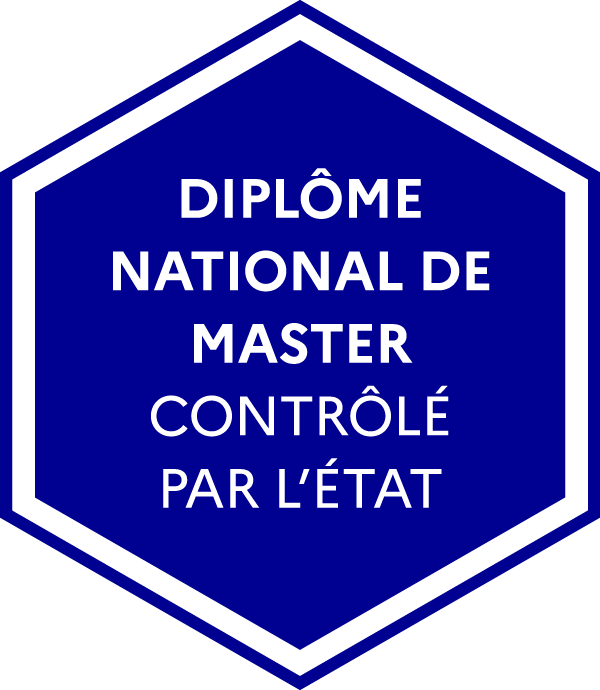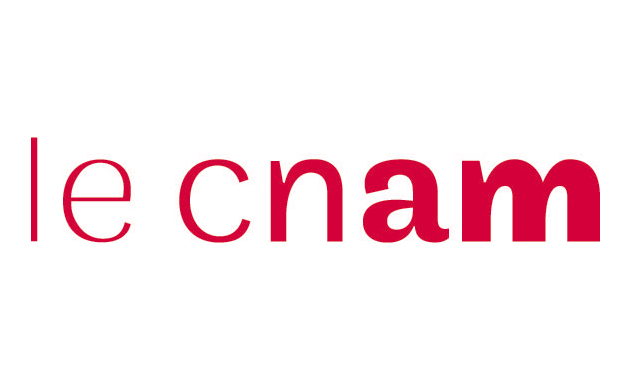Master's degree Microsystems and communicating sensors


Entry requirements
For M1, a high school diploma plus three years of higher education in science. For M2, a high school diploma plus four years of higher education in science. Recruitment on the basis of application.
Benefits of the program
The course is supported by the ESYCOM Laboratory’s excellent skills in the subjects taught and state-of-the-art lessons are given on its research topics.
Speakers from the industry present seminars on rapidly changing fields.
Part of the curriculum is taught in English, thereby preparing students for entry into the industrial or research sector.
Acquired skills
Theoretical knowledge: physics of materials for micro-technology, physics of electrical and optical components, communication systems, microwave devices.
Methodological knowledge: design of analogue integrated circuits, design of digital circuits, electromagnetic compatibility of circuits and systems.
Practical knowledge: clean-room technologies, microwave characterisation, modelling (mechanical, microwave frequency or components), circuit design software, circuit programming (VHDL), Java.
International
Under an agreement with ESIEE-Paris, some classes from this specialisation are shared and open to students from this school on Erasmus exchanges. They are taught in English and correspond to 71 hours. On top of this, there are 21.5 hours of English language classes.
Students can also perform their work placement abroad and access support from the university’s International Relations Department.
Students also have the possibility to study abroad during M2, within the framework of an agreement that establishes the equivalence between teaching units. Such agreements are established with the programme coordinator and the university’s International Relations Department.
Capacities
20
Course venue
Your future career
Graduates can become design engineers, research engineers, project managers in companies, researchers or faculty members.
They can work in the following sectors of activity:
- Sectors requiring advanced miniature sensors and circuits (transport, medical instrumentation, etc.)
- Industrial sectors requiring the use of sensors or measuring systems (quality control, tests, home automation, energy).
- Telecommunications: development of communication devices, monitoring of connection quality.
It is also possible to move into research. Graduates can work in public or private research and development, as well as in teaching and research in universities and schools.
Professional integration
After this course , graduates can become design engineers, research engineers, project managers in companies, researchers or faculty members. They can work in the following sectors of activity:
- Sectors requiring advanced miniature sensors and circuits (automotive, aeronautics, rail, medical instrumentation, environmental monitoring, etc.)
- Industrial sectors non-specialised in electronics but requiring the use of sensors or measuring systems (quality control, tests, home automation, energy, smart cities).
- Telecommunications: development of communication devices, monitoring of connection quality.
It is also possible to move into research, depending on the type of internship undertaken. Graduates can work in the public and private research and development sectors, as well as in teaching and research at universities or schools.
Study objectives
This course prepares students to work as designers of advanced electronic systems, such as communicating systems and systems that use advanced, miniature sensors. Graduates can work in sectors requiring specific electronic circuits and advanced miniature sensors (transport, housing, medical applications, environmental monitoring), industrial sectors requiring measurement systems (quality control, energy, smart cities), and telecommunications (development of systems, monitoring of connection quality).
Due to the rapid evolution of technologies in this field, focus is placed on providing students with solid knowledge in physics, technology and design.
This course develops dual specialisation in micro-technologies and communication system design. Students graduate with knowledge in these fields on several levels: firstly, solid theoretical knowledge in physics (physics of materials and components), communication systems and microwave devices; methodological aspects, including design methods for analogue and digital circuits, circuit programming, and consideration of electromagnetic compatibility aspects in circuits and systems; and experimental expertise in technological aspects, including measurement, modelling and computation tools.
This course is oriented towards both industry and research, even if it is more focused on preparing students to work in a company.
Major thematics of study
Integrated analogue electronic circuit design, microwave circuits, programmable digital circuits, electronic components, MEMS micro-sensors, micro-device manufacturing technologies, Java, antennas, modelling (mechanical, electromagnetic, circuits, components).
Calendar
From mid-September to end of March, there are theoretical and practical classes, followed by a mandatory internship of four to six months beginning in April.
Options
During M2, one option (2 ECTS) must be chosen from three possibilities:
- Very high-speed optical links
- HF transmission
- Business management
Semester 3
| Courses | ECTS | CM | TD | TP |
|---|---|---|---|---|
|
Analyse de Cycle de Vie
| 3h | 12h | ||
|
Conception de systèmes RF
After emphasizing the reasons of the difference between high-frequency behaviour of electric components from their low-frequency behaviour, new vocabulary and analysis methods followed by new design techniques are presented and applied. In order to cover different circuit components, a basic system of radio transmitter and receiver is considered. Each block in the chain is studied considering its individual functional properties and its interaction with other neighbouring components in the chain, with different constraints to consider and trade-offs to make. The course is divided into 5 chapters: Introduction to RF circuits, Issues in RF design, Amplifiers, Mixers, Oscillators. Seminar: microwave sources. Practical works performed using ADS software. | 3 | 21h | 2h | 8h |
|
Initiation aux MEMS et à la micro-électronique
Integration at the transistor level, Design for Manufacturing, Design of memories. Design of library cells : electrical scheme, simulation, layout, fabrication in clean room. | 2 | 18h | 8h | 2h |
|
Micro-capteurs MEMS
I. Basic of MEMS fabrication : Reminder of MEMS fabrication, Tutorial on MEMS fabrication II. Inertial MEMS : MEMS accelerometer, Tutorial on MEMS accelerometer, Coventor lab on MEMS accelerometer, MEMS gyroscope, ANSYS tutorial on MEMS gyroscope III. Other MEMS applications : MEMS sensors for environment, MEMS sensors for healthcare, MEMS sensors for biology, MEMS sensors for energy, MEMS sensors for airborne particle contamination | 3 | 17h | 7h | 6h |
|
Composants électroniques et optiques avancés
The aim of this course is to discover the possibilities of the semi-conductor technology and to get more insights into its physics and technological development. Targeted applications will be high-frequency technology (in the microwave and millimeter-wave) for the 4G and 5G, optoelectronics for sensing (Infrared, Vision, Imagers), high speed communication (fiber communications, LiFi, Radio-over-Fiber for the 5G), and digital computing for future IA and cyber applications. It will encompasses Silicon and III-V materials, bipolar and CMOS advanced technologies, quantum computing and optoelectronics/photonics technologies. The course will deal both with advanced physics of semiconductors and generic understanding of a technology. | 3 | |||
|
Composants électroniques avancés
Teaching language ANGLAIS / ENGLISH | 17h | 10h | 3h | |
|
Composants optiques
Teaching language FRANÇAIS / FRENCH | 6h | 2h | ||
|
Conception de circuits intégrés analogiques
This course provides the audience with knowledge and techniques in building analog circuits for various sensing applications as well as for communication receiver devices. It develops the necessary concepts and continues with circuit design examples, including practical experiments. Circuits as cascode circuit, integrated differential amplifier, Gilbert cell. Practical works are performed using Cadence software. | 3 | 13h | 4h | 8h |
|
Circuits intégrés numériques
Design of digital integrated circuits : architecture of digital devices; VHDL, description and simulation of a digital device; Methodology of logic synthesis; Test of digital circuits and design of testable circuits; Programmable circuits as FPGA; Application on FPGA devices. Data acquisition : elementary chain of data acquisition, analog-digital conversion, interface electronics; data flow. | 2 | |||
|
Conception de circuits intégrés numériques
Teaching language FRANÇAIS / FRENCH | 8h | 10h | ||
|
Acquisition de données
Teaching language FRANÇAIS / FRENCH | 4h | 6h | ||
|
Technologies des circuits programmables et mémoires
Technologies used to make a digital circuit programmable and related properties. Technologies and properties of memories. | 1 | 10h | 4h | |
|
Informatique pour l’Intelligence Artificielle
Java language. | 3 | 12h | 15h | |
|
Anglais
Written and spoken english. | 3 | 20h | ||
|
PCB et intégrité de signal
The objective is to learn how to design an integrated circuit ensuring a correct transmission of fast signals. Signal integrity deals with problems linked to signal transmission in integrated circuits and several conductors. The EMC (Electromagnetic Compatibility) studies unintentional couplings encountered when two devices work at the same time. These phenomena disturb the transfer of fast signals. The concrete case of a multilayer integrated circuit using a last generation FPGA and DDR3 memories is studied. Signal transmission between the FPGA and the memories is studied using Cadence Allegro and Hyperlynx softwares. The components are represented using Ibis models. Skills: Identifying problems posed by signal integrity. Understanding propagation and cross-talk problems, as well as input-output modeling using Ibis models. Notions of multilayer integrated circuit design. | 3 | 12h | 2h | 16h |
|
Antennes : fonctionnement et propriétés
This course firstly presents the different characteristics of antennas (directivity, gain, radiation efficiency, input impedance...) to permit the choice of an antenna for a targeted application. Then it focuses on the radiation of an elementary dipole and the theoretical calculus of its properties. Finally an introduction of antenna arrays is presented (array factor). | 1 | 9h | 3h | |
|
Méthodes de modélisation en électromagnétisme
Principles and properties of the different modeling methods in electromagnetism. Study of the FDTD method, the Finite Element Method and the Method of Moment. Practical works using Ansoft Designer (Finite Element Method) and Matlab (Method of Moment). | 1 | 12h | 6h | |
|
Séminaires industriels
Seminars given by industrials on leading-edge topics related to the Master training. | 24h | |||
|
Liaison optique pour le très haut débit / Choix 1
Necessary bases for designing optical link of very high throughput, through double skills namely high frequencies in the electrical domain and optics as the transmission support is the optical fiber. Characteristics of key components for this link (laser source, photodetector, different modulators, optical fiber). Possible architectures (direct modulation/direct detection, phase modulation/coherent detection...) and their related advantages. Tools (mathematical formulas) to understand the impact of noise sources and non-linearities of different components on the quality of the opto-microwave link. | 2 | 12h | ||
|
Transmissions HF / Choix 2
Reminders on the characteristics of the main transmission supports (twisted pair, coaxial, optical fiber...). Main relationships deduced from the study of transmission lines (input impedance, SWR, power adaptation devices, reflection...), solving using Smith chart. Characterization of RF devices using S-matrix. Chain matrix for cascading two-port networks. Definition of isolation losses, insertion losses, powers. Example of 3dB-coupler. Transmission through radiated waves. Reminders on the characteristics of the radiated field components and on antennas (gain, directivity, radiation diagram...). Influence on the environment on wave propagation. Applications and examples on link budget. | 2 | 9h | 3h | |
|
Gestion d'entreprise / Choix 3
What is a company (function, status), management styles, different functions of companies, labor law, commercial activity. Study of a practical case. | 2 | 4h | 9h |
Semester 4
| Courses | ECTS | CM | TD | TP |
|---|---|---|---|---|
|
Stage
Internship during 4 to 6 months | 30 |
RICHALOT-TAISNE Elodie (M1-M2)
RICHALOT-TAISNE Elodie (M2)
SPAENS Julia (M1-M2)
Partners



ESIEE-Paris

